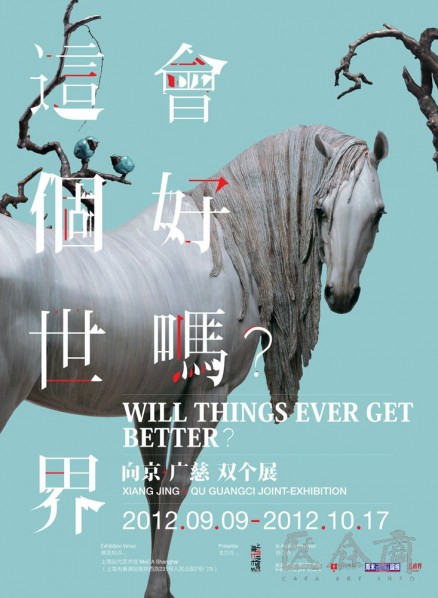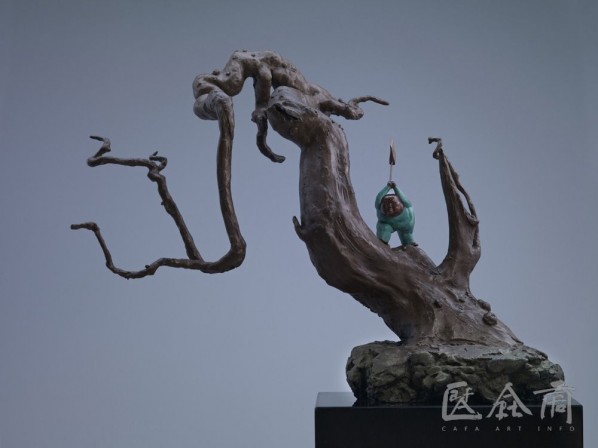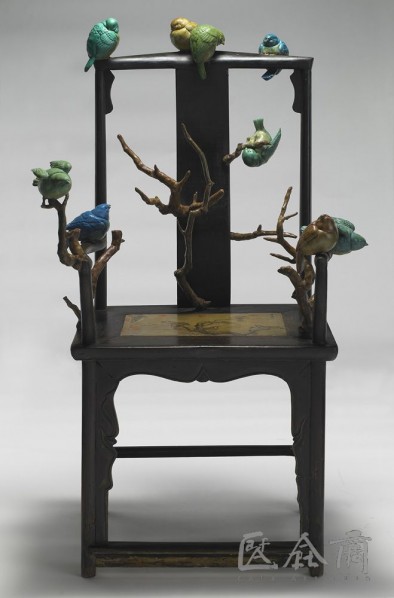
The Museum of Contemporary Art, Shanghai (short for MoCA Shanghai) is pleased to announce “Will Things Ever Get Better?” joint-exhibition by Xiang Jing and Qu Guangci to be held at MoCA Shanghai from September 9 through to October 17, 2012. The artists offer their sentiment and questioning of life, art, the past and the present through their artistic language, trying to evoke thinking in the audience about their potential problems inside.
From Shanghai to Beijing, again from Beijing to Shanghai, Xiang Jiang and Qu Guangci have shuttled in the time space of two cities. Looking on the niceties and the falsity in this prosperous but absurd world, they put a question to the common people, “Will things ever get better?”
Actually, we do not need an answer for whether things will ever get better. Both good and bad are the objective presentation confusing people, and there is also the self-paralysis of subjective views. When the question is put forward from an artist, it has actually disturbed the order of the mundane world as answers from everyone will reveal their own situation. It’s like the uncertain principle in quantum physics, when you’re trying to extract the answer, you’ve already disturbed the quality and location of microscopic particles. Therefore, the absolute truth will remain a stern mask as worn by the god of nihility.
The floating world is the drifting dust of the mortal world, the red haze of human activity tinting the sun in the sky. The painted scrolls of history tend to begin mildly and move towards liveliness, from cold to energetic. From broad meadows ringing with cowbells and shepherd’s flutes to the wharves and taverns of the bustling cities; from the pride of the loner to the dizzying cacophony of the collective. Those who persist on a lonely aesthetic path are growing increasingly rare, while those who leap into the embrace of gleaming towers like Spiderman will always be lauded by the crowd. These awkward straits are not unique to modern man; the people of the past faced them too. It is just that the explosion of information in this era has magnified them to infinity.
The works Xiang Jing brings to Shanghai can be simply classified into two parts, “Acrobats” and “Animals” both tell about one thing: plight. “Acrobats” has a distinct flavor of performance, but “Animals” is more connected to the sense of being surrounded by onlookers. As Xiang said in the interview “World of ‘Being’, Are You Alright?” on the surface these themes seemingly have nothing to do with her focus on human nature or emotional pain as in previous works. Maybe it is because the part of a person she was concerned with before had to do with natural attributes, whereas the issue of “predicament” that she was working on now is directly connected to a person’s sense of identity. “Role” or “performance” or “being looked at”—she thinks these concepts can bring out fresh, intense expressions of identity. At the same time, through these ways of “seeing” people we are reminded of their predicament.

Otherworld--Will things ever get better by Xiang Jing, 2011; Fiber glass, painted, 215×265×120cm

Mortals - only a mirror can dream about reflections by Xiang Jing, 2011; Fiber glass, painted, 300×165×80cm
The “bird call and response” that Qu Guangci overhears is in a language that is neither human nor avian, and therefore contains many subtleties that can only be sensed, not spoken. In the floating world prosperity grows more desolate the hotter it is. In this way, prosperity can be viewed as the roiling steam created by the friction between an infinite number of lonely individuals. Whether in a concrete jungle or a copper grove, posture is always the most important. Looking out into the distance, the man, bird and tree are as one, a composite, wholly inseparable. The man’s personality cannot leave the bird’s body and the bird cannot leave the tree’s branch. There is no desire to fly, as the sky does not belong to the floating world. Qu Guangci’s artwork reveals a touch of humor in cold serenity.

Qu Guangci-Rolex Series, 2012; cast copper, 97x118x71cm

Qu Guangci-My Nature Tree, 2010; wooden chair, painted fiber glass, 121x72x61cm
These are “Ukiyo-e” by Xiang Jing and Qu Guangci. It would be a very happy thing to be an independently thinking artist in an epoch that the individual is submerged in the collective consciousness.
The Museum of Contemporary Art in Shanghai aims to bring the energy to the audience to look into their inner parts through the perspectives of these two artists. An art work can be taken as the unique language of an artist throwing doubt on contemporary society through a wide variety of patterns while a question with no answers depends on the inner state and life experience of each audience. Thus MoCA, provides a sphere for the artist to tell their stories to the masses, which is not only an observation of the cultural process but also a social responsibility!
About the exhibition
Location: MoCA Shanghai
Dates: 9 September-17 October, 2012
Open Hours: Monday-Sunday, 10:00 am~9:30 pm
Organizer: MoCA Shanghai
Sponsors: Xiang Jing + Guangci Sculpture Studio, Modern Media, iWeekly, Art Magazine Leap




























